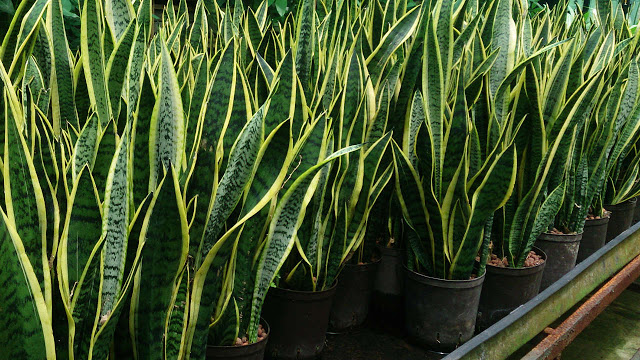The flower with the funny name is the tongue-in-law
One of the interesting plants that can be planted indoors is the tongue-in-law, or tongue of the devil. In Latin the tongue-in-law is called Sansevieria, is one of the genera of 70 species of flowering plants. According to its origin, tongue-in-law comes from Africa, Madagascar and southern Asia. Many people are getting interested to plant it, how to plant and treat tongue-in-law in the room is considered very easy.

The most common species used as ornamental plants in temperate climates include Sansevieria Trifasciata. Plant growth is relatively slow and usually lasts for years. The morphology of tongue-in-law plant is characterized by high leaf growth, rigid and erect leaves. Including one of Xerofit plants, plant species that live in dry and barren land.
Characteristic of this plant is green and striped yellow or white. So it looks interesting to be ornamental plants in the room. There are also other types of cultivated communities, including Sansevieria Cylindrica. The features are similar to Sansevieria Trifasciata.

Some myths mention, tongue-in-law plant brings fortunes. As in Barbados, they believe that Sansevieria is a "cash crop". Whoever plants it will always have money because it is green. According to feng shui, this plant is very well planted because its leaves grow upward. If placed in a children's room, can reduce feelings of fussiness, or often disturbed sleep.
How to Plant And Treat The Tongue Ingredients
This plant is very useful for health, especially for the dirty air circulation for smokers. In addition, the leaves are also believed to cure some diseases. As for how to plant and treat the tongue-in-law in the room as decoration is as follows:
As a first step, take the buds of the tongue-in-law that grows from an adult plant.
Cut with sharp objects along with rhizome roots, but do not damage the buds.
Another method by way of penyetekan leaves tongue-in-law, slicing leaves that have grown.
Prepare the planting media, containing soil that is not moist and not too dry. Can be assisted with organic compost for growth nutrients, such as chaff.
Try not to use compost dirt, because it is feared will cause the smell in the room.
After that, move the buds tongue-in-law into the pot that has been provided. Give a little pebble or rock that serves as a buffer to keep it from moving. Or it could be by tampering the soil.
Flush with water, but not too much to avoid the decay of roots and leaves of cuttings.
Put in exposed sunlight for several weeks. If placed indoors, make sure the pot position is close to the window.

Take Care of the Routine Interventional Tongue
Advantages of tongue-in-law can grow in hot and arid climates. It can also thrive in less sunlight. For adult plants, here's how to plant and care for tongues-in-law in the room to thrive:
Be careful with excessive watering, tongue-in-law can rot. As well as aloe vera cultivation, this plant most like dry land.
In the room is very vulnerable to grow mildew due to lack of sunlight. Keep the dryness of the planting medium so that the condition is not too dry and not moist.
Occasionally, move in the open exposed to the sun to make sure the fungus does not develop.
When the plant has expanded beyond the pot capacity, separate it into larger containers. Large size can break the pot that has been used.

The benefits of tongue-in-law can be used to nourish hair. Can also be processed into diabetes drugs, hemorrhoids, and cancer malignant. This plant can eliminate the smell of home furnishings in the room. Because it is able to absorb toxic substances such as carbon dioxide, trichlorethylene, benzene, and formaldehyde. The tongue-in-law absorbs carbon dioxide and releases oxygen at night, so it is very well placed in the bedroom.

It is important to note, the leaves of the tongue-in-law are considered toxic. Although some references to traditional medicine mention it as a herbal ingredient. But keep away from the reach of children, especially put it in the bedroom room.